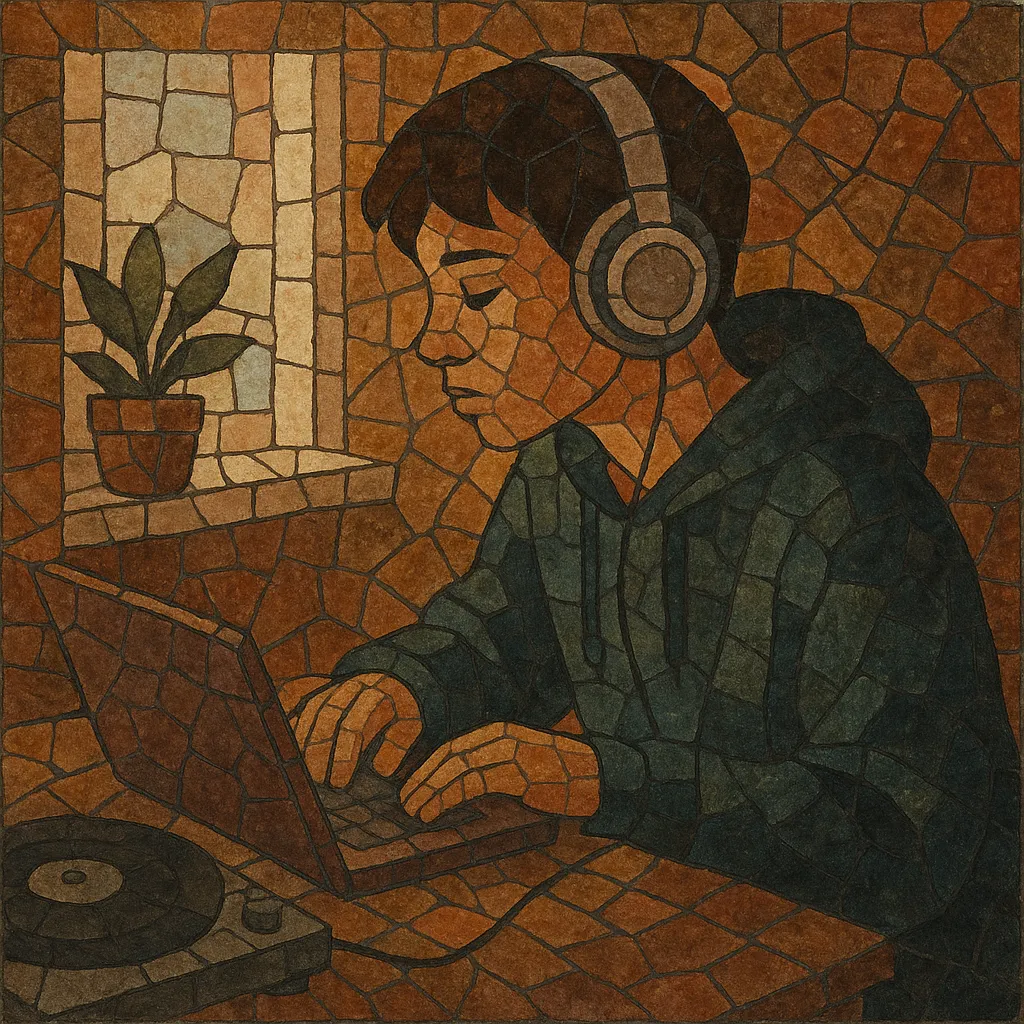
Lo-fi hip hop is a mellow, sample-driven offshoot of hip hop that emphasizes warm, imperfect textures, simple loops, and relaxed grooves over virtuosic rapping or dense production. Producers often foreground tape hiss, vinyl crackle, and bit-depth artifacts to evoke a cozy, worn-in feeling that complements the genre’s minimal, repetitive structures.
Built from boom-bap drum programming, jazzy chord progressions, and short melodic motifs, lo-fi hip hop typically functions as instrumental background music for reading, studying, or unwinding. Its aesthetics are closely tied to internet culture—especially 24/7 livestreams and anime-inspired visuals—making it one of the most recognizable “ambient hip hop” sounds of the streaming era.
The foundations of lo-fi hip hop lie in classic hip hop beatmaking and the boom-bap sound of the 1990s. Producers such as J Dilla and DJ Shadow helped popularize highly musical, sample-centric instrumentals, often drawing from jazz, soul, and library records. In the 2000s, Nujabes in Japan blended mellow hip hop rhythms with lyrical jazz harmony and melodic motifs, foreshadowing the gentle mood that would define lo-fi hip hop.
As Bandcamp, SoundCloud, and YouTube made self-releasing easier, a wave of bedroom producers began sharing short, loop-based instrumentals with intentionally degraded sonics—soft drums, vinyl crackle, and minimal arrangements. The term “lo-fi hip hop” gained traction as playlists and channels organized this sound into an identifiable style distinct from broader instrumental hip hop and trip hop.
Round-the-clock YouTube streams (popularized by channels like LoFi Girl/ChilledCow) crystallized the genre’s image: muted colors, anime-inspired study scenes, and an endless flow of calming beats. This format turned lo-fi hip hop into a ubiquitous companion for studying and relaxation, while also creating a feedback loop where audience demand shaped track length, pacing, and production choices.
By the 2020s, lo-fi hip hop had matured into a robust global scene with labels and collectives releasing compilations and seasonal projects. The sound cross-pollinated with nu jazz, bedroom pop, and indie R&B, while producers explored more live instrumentation (e.g., electric pianos, guitar, soft horns) and refined mixing approaches that preserved warmth without sacrificing clarity. Despite its understated profile, the genre remains a fixture of streaming culture and an entry point for emerging beatmakers.

